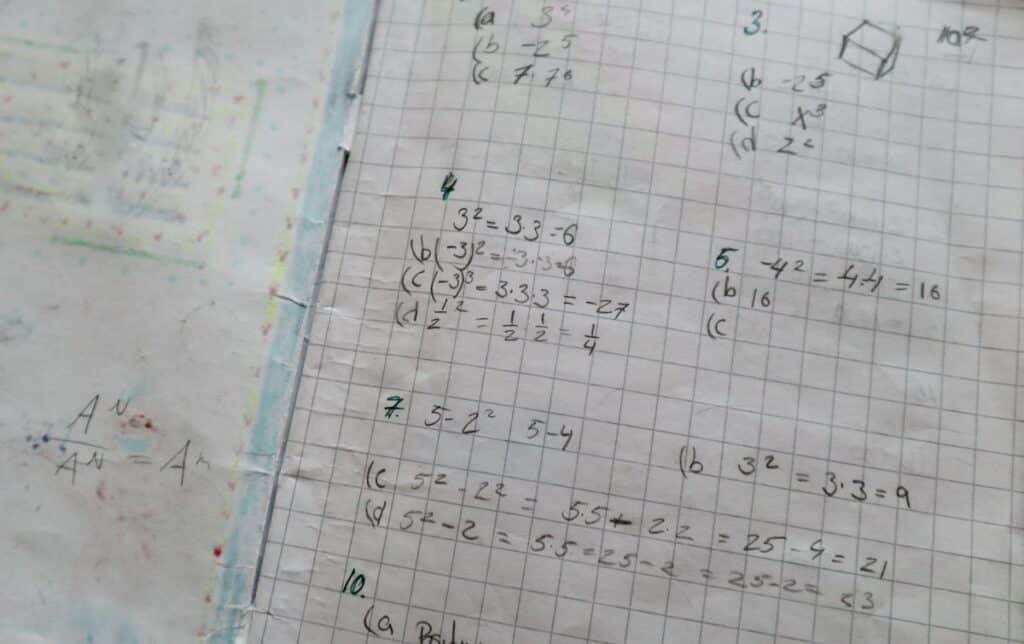The transition to 8th-grade math often presents a pivotal moment in a student’s academic journey. This isn’t just another year of mathematical concepts; it’s a critical bridge year, solidifying foundational skills necessary for high school algebra and beyond.
As educators, we understand the immense pressure on our 8th graders to grasp complex ideas ranging from linear equations and functions to geometry and statistics. How do we ensure every student not only survives but thrives in this crucial year?
There can be particularly bright students, academically strong in many areas, who find themselves consistently struggling with algebraic expressions. Despite their best efforts, the abstract nature of variables and equations seems to elude them.
This experience, and many like it, underscores the importance of a multifaceted, strategic approach to teaching 8th-grade mathematics. Success in 8th-grade math often hinges on these fundamental shifts in approach.
Building a Strong Foundation in 8th-Grade Math
Eighth-grade math isn’t about rote memorization; it’s about conceptual understanding and the ability to apply those concepts.
- Reinforce Number Sense and Operations: Before diving deep into algebra, ensure students have a robust understanding of rational and irrational numbers, integers, fractions, and decimals.
Many algebraic errors stem from weaknesses in basic arithmetic operations. Regular warm-ups and quick checks on these foundational skills can make a significant difference.
- Emphasize Pre-Algebraic Concepts: Concepts like ratios, proportions, and percentages, while seemingly simple, are the building blocks of algebraic reasoning. Showing their interconnectedness and real-world applications helps students see the “why” behind the “what.”
- Visualize and Model: Abstract concepts become tangible when students can visualize them. Utilize tools like algebra tiles, geometric models, and graphing calculators to represent equations and functions. For example, demonstrating the slope-intercept form of a linear equation (y=mx+b) visually on a graph helps solidify the meaning of slope (m) and y-intercept (b).
Strategies for Deeper Conceptual Understanding
Moving beyond basic reinforcement, specific instructional strategies can significantly enhance comprehension in 8th-grade math.
- Problem-Based Learning (PBL): Presenting real-world problems that require mathematical solutions engages students deeply. Instead of simply providing equations, challenge students to formulate them based on a given scenario.
This fosters critical thinking and problem-solving skills, mirroring how math is used outside the classroom.
- Collaborative Learning Environments: Group work encourages students to articulate their thinking, defend their reasoning, and learn from their peers. When students explain a concept to another student, their own understanding deepens.
Structured group activities, such as “think-pair-share” or jigsaw puzzles where each group member becomes an expert on a specific part of a problem, can be highly effective.
- Concept Mapping and Graphic Organizers: Encourage students to create visual representations of mathematical relationships. A concept map for linear equations, for example, might connect slope, y-intercept, points, and various forms of equations. This helps students organize their thoughts and see the big picture.
Addressing Common Challenges and Misconceptions
8th graders often encounter specific hurdles in their 8th-grade math journey. Proactive strategies can mitigate these.
- Demystifying Variables: For many, the concept of a variable as an unknown quantity is abstract. Use analogies (e.g., a variable is like a placeholder in a game) and connect them to real-world scenarios where an unknown value needs to be determined. Consistently emphasize that solving for a variable means finding the value that makes the equation true.
- Understanding Functions: The idea of a function as a relationship where each input has exactly one output can be challenging. Use function machines or input-output tables to illustrate this concept.
Explore various representations of functions – equations, graphs, tables, and verbal descriptions – to ensure a holistic understanding.
- Navigating Geometry: Geometric concepts in 8th grade often involve spatial reasoning and understanding properties of shapes, transformations, and the Pythagorean Theorem.
Hands-on activities using manipulatives, geoboards, and dynamic geometry software can greatly aid in visualizing these concepts. Regularly connecting geometric principles to real-world structures or art can also enhance engagement.
Cultivating Effective Study Habits and Mindsets
Beyond direct instruction, fostering a positive attitude and strong study habits is paramount for 8th-grade math students.
- Encourage Active Learning: Moving beyond passive listening, students should be encouraged to ask questions, work through problems, and actively participate in discussions. Provide opportunities for students to present their solutions and explain their reasoning to the class.
- Promote Metacognition: Teach students to think about their thinking. After solving a problem, prompt them to reflect: “What strategies did I use? Where did I get stuck? How could I approach this differently next time?” This self-reflection leads to improved problem-solving skills.
- Emphasize Productive Struggle: Learning math often involves grappling with challenging problems. Normalize the idea of “productive struggle,” that it’s okay not to get the answer right away, and that perseverance leads to deeper understanding. Celebrate effort and progress, not just correct answers.
- Utilize Technology Wisely: Educational apps, online tutorials, and interactive simulations can supplement classroom learning. Tools like Desmos for graphing, Khan Academy for concept reinforcement, or IXL for practice can offer personalized learning experiences. However, ensure technology is used as a tool for understanding, not a replacement for fundamental skill development.
Partnering with Parents and Guardians
Student success is a shared responsibility. Open communication with families is vital.
- Regular Progress Updates: Keep parents informed about their child’s progress, highlighting areas of strength and areas needing improvement.
- Provide Resources for Home Support: Share online resources, textbook pages, or specific strategies that parents can use to support their child’s learning at home. This could include recommending reputable math websites or suggesting ways to integrate math into everyday activities.
- Emphasize the Importance of Homework: Explain the purpose of homework – not just for grades, but for reinforcing concepts and developing independent practice skills. Encourage dedicated study spaces and time at home.
Conclusion: Equipping Students for Future Success
Eighth-grade math is more than just a set of equations and theorems; it’s a foundational year that shapes a student’s mathematical confidence and prepares them for the rigors of high school and beyond.
By implementing these strategies – focusing on conceptual understanding, employing diverse teaching methods, addressing common challenges, fostering effective study habits, and partnering with families – we can empower our 8th-grade students to achieve lasting success in mathematics.
Our collective goal as educators is to ensure that every student leaves 8th grade not only proficient in math but also with a genuine appreciation for its power and relevance in the world around them.
Educators never stop learning; check out our available graduate degree programs to hone your skills and promote lifelong learning and academic excellence.




